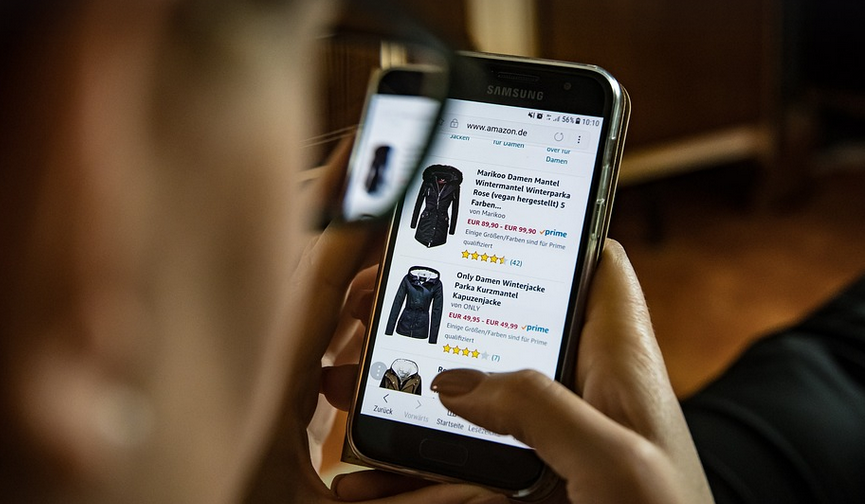Is A Mouse A Consumer? Unpacking The Definition

A Tiny Tech Tool, Big Questions: Understanding Consumerism
So, you’ve got your trusty mouse. Whether it’s navigating through websites or clicking away on that new game you just downloaded, this little guy plays a huge role in our digital lives. But does it qualify as a true consumer? It turns out, the answer is a bit more complex than we might think.
Let’s dive into the fascinating world of consumerism and explore what makes a “consumer” in the first place. It’s not just about buying things; it’s about the relationship between products, people, and our everyday lives.
Defining Consumer: The Goods, Services, and Experiences
At its core, consumerism is all about how we engage with goods, services, and even experiences—things that enhance our lives in some way.
Think of it this way: Imagine you buy a new pair of shoes. You’re not just buying footwear; you’re investing in the feeling of comfort, style, and perhaps even confidence that comes with them. That’s consumerism in action—the purchase unlocks experiences and impacts your daily life.
But the definition doesn’t stop there. Consumerism also encompasses:
- Buying a car for personal transportation or work
- Investing in real estate to secure a stable home
- Experiencing a concert by buying tickets, joining a fan club, and interacting with other fans.
Mice: A Technological Bridge Between User and the Digital World
Now, let’s talk about our little companions—the mice. They play a pivotal role in connecting us to the digital world, making it possible for us to click, scroll, and interact with online spaces.
From navigating through emails to browsing social media platforms, mice are essential tools for our everyday lives.
But is buying a mouse itself “consuming”? It depends on your perspective.
On the one hand, purchasing a mouse involves using resources and investing in a product—which aligns with the definition of consumerism.
On the other hand, mice are often considered tools rather than “consumer goods” per se, especially when we look at the broader picture.
For instance, your mouse might be the bridge connecting you to a world of information and entertainment. It’s not just about acquiring a physical object; it’s about utilizing the product to achieve something—navigating complex digital landscapes, learning new things, or simply having fun.
The Mouse’s Role in Consumerism: A Complex Dance
So, what’s the point of all this? The answer isn’t straightforward. It depends on how you define “consumer” and what aspects of consumerism are important to you.
While mice don’t fit the traditional mold of a “consumer” in terms of spending big bucks on luxury items or brands, they are definitely part of the larger ecosystem of “consuming” things.
The mouse acts as a gateway to the digital world—a physical embodiment of what we might call “consumption.” It makes us more connected to technology and allows us to interact with it in meaningful ways.
Consider this: if you’re interacting with your computer, you’re using a mouse. The mouse is an essential tool in the process.
Beyond the Business Model: The Wider Picture
When we talk about mice as “consumers,” it also helps us understand the broader picture of consumerism.
The digital world has seen a significant rise in “tech-driven” consumption, driven by tools that enhance our lives. From smartphones to smart watches, these devices are not only about providing functionality but also about shaping how we consume information and interact with each other.
As technology continues to evolve at an astounding rate, how we define “consumer” may need to adapt to reflect this constantly shifting landscape.
We can start asking questions like:
- Is the mouse a tool that helps us consume digital experiences?
- Does its role in “consumption” influence how we understand consumerism as a whole?
The Mouse’s Lasting Impact on Culture and Technology
Looking at the history of mice, it’s fascinating to see how they have shaped culture and technology. The mouse has transcended its role as simply a click-and-drag machine.
It’s become an iconic symbol of the digital age, representing our connection to information and technology.
The evolution of this little gadget has led to significant advancements in computer science and user interface design, forever impacting how we interact with computers and navigate through the digital world.
From its humble beginnings as a simple cursor-controlled device, the mouse has evolved into a complex technological marvel that plays a central role in our daily lives.
The Mouse’s Evolution: From Basic Clicker to Digital Companion
Looking back at the mouse’s journey reveals how technology constantly shapes and reshapes our lives.
The simple act of clicking has become a fundamental part of our digital experiences. This small device has given us access to vast amounts of information, allowing us to connect with others from all over the world. It’s a testament to how technology can play an integral role in shaping our everyday lives.
As we continue to explore the evolution of mice and their impact on our digital lives, it reminds us that even the most mundane objects can hold immense significance when viewed through the lens of consumerism.
The mouse is a reminder that technology doesn’t just exist; it shapes how we interact with the world around us.
Beyond the Product: The Mouse’s Role in our Consumption Ecosystem
So, let’s consider the broader picture of the “mouse” as a consumer. It goes beyond simply owning and using this device to explore the larger ecosystem of consumption.
Think about how we use our mouse for different purposes. For instance:
- A gamer uses their mouse for precise control in games.
- A documentarian edits videos on their computer, navigating through complex software applications using a mouse.
Consumerism’s Evolving Landscape: A Mouse as a Window to the Future
The definition of “consumer” continues to evolve with technological advancements. As we move forward in this rapidly changing world, our understanding of “consumption” will likely continue to shift and adapt.
From virtual reality experiences to new forms of digital entertainment, the line between consumerism and technology is blurring more than ever before. What began as a simple tool for navigating through digital landscapes has now taken on new dimensions of meaning in the modern world.
The mouse, a tiny technological marvel, serves as a powerful reminder that technology shapes our lives in ways we might not even realize. It’s a symbol of how consumption is no longer just about buying things; it’s becoming a much more complex and nuanced experience.

